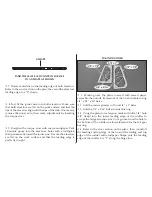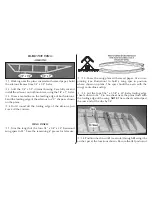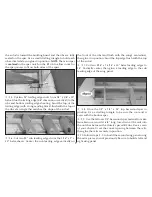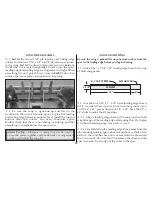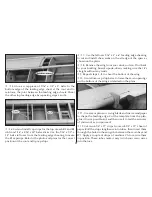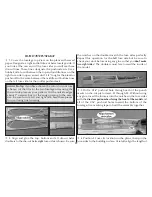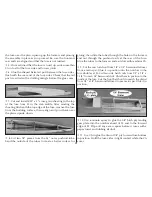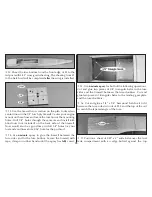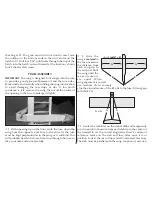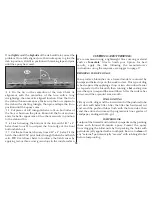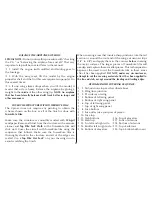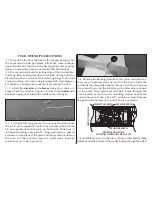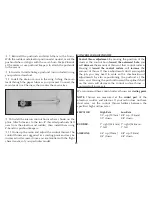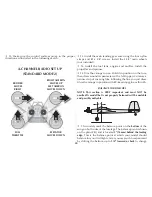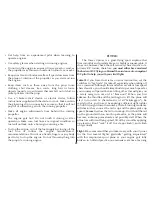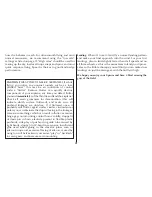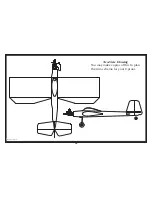
21
the flying characteristics. Moving the balance
forward
may
improve the smoothness and arrow-like tracking, but it may
then require more speed for takeoff and make it more difficult
to slow down for landing. Moving the balance
aft
makes the
model
more agile
with a lighter and snappier feel. In any case,
please start at the location we recommend and do not at any time
balance your model outside the recommended range.
❍
2. With all equipment installed (ready to fly) and an
empty
fuel
tank, lift the model at the balance point. If the tail drops when
you lift, the model is “tail heavy” and you must move weight
toward the nose to balance. If the nose drops, it’s “nose heavy”
and you must move weight toward the tail to balance. Try to
balance the model by changing the position of the
receiver
battery
and
receiver.
If this is not enough, you may need to add
stick-on weights to the tail or a heavy prop hub to the nose.
PREFLIGHT
BALANCE THE PROP
Balance your propellers carefully before flying. An unbalanced
prop is the single most significant cause of damaging
vibration. Not only will engine mounting screws and bolts
vibrate out, possibly with disastrous effect, but vibration will
also damage your radio receiver and battery.
CHARGE THE BATTERIES
Follow the battery charging procedures in your radio
instruction manual. You should
always
charge your transmitter
and receiver batteries the night before you go flying, and at
other times as recommended by the radio manufacturer.
GROUND CHECK THE MODEL
If you are not thoroughly familiar with the operation of R/C
models, ask an experienced modeler to check if you have
installed the radio correctly and that all the control surfaces
move in the correct direction. The engine operation also
must be checked and the engine “broken-in” on the ground.
Follow the engine manufacturer’s recommendations for break-
in.
Check to make sure all screws remain tight, that the
hinges are secure and that the prop is on tight.
RANGE CHECK YOUR RADIO
Wherever you fly, you need to check the operation of the
radio before the first flight of the day. This means with the
transmitter antenna collapsed and the receiver and transmitter
on, you should be able to walk at least 100 feet [30.5 meters]
away from the model and still have control. Have someone
stand by your model and, while you work the controls, tell
you what the various control surfaces are doing.
Repeat this test
with the engine running
at various speeds,
with an assistant holding the model. If the control surfaces
are not always acting correctly,
do not fly!
Find and correct the
problem first.
Failure to follow these safety precautions may result in severe
injury to yourself and others.
• Keep all engine fuel in a safe place, away from high heat,
sparks or flames, as fuel is very flammable. Do not smoke
near the engine or fuel; and remember that the engine
exhaust gives off a great deal of deadly carbon monoxide.
Therefore do not run the engine in a closed room or garage.

